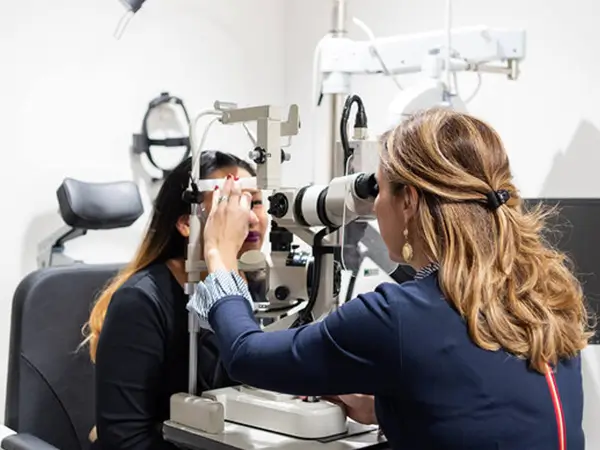Only for Licensed Professionals
Only for Licensed Professionals
.webp)
Is Tobradex an Antibiotic?
Nina Petrovic
Last Updated On: September 9, 2025
Antibiotics play a vital role in treating bacterial eye infections, reducing bacterial load and preventing complications when used correctly. In eye care, they help stop harmful microbes from spreading, giving the body a better chance to heal.
Tobradex, however, is not just an antibiotic. It is a combination medication that brings together tobramycin (an aminoglycoside antibiotic) with dexamethasone (a corticosteroid). This dual-action formula targets two problems at once: fighting bacteria while calming the inflammation that often accompanies infection. Importantly, Tobradex is indicated for steroid-responsive inflammatory eye conditions where actual bacterial infection or the risk of it exists, meaning it is not used for every type of eye irritation or redness.
In this article, we’ll explore whether Tobradex qualifies as an antibiotic, how its mechanism of action works, and why its benefits come from the combined effect of both active ingredients.
Key Takeaways
- Tobradex is not purely an antibiotic. It is a combination drug containing tobramycin (antibiotic) and dexamethasone (corticosteroid).
- Tobramycin is bactericidal, disrupting protein synthesis and ultimately killing bacteria like Staphylococcus aureus, Haemophilus influenzae, and Streptococcus pneumoniae.
- Dexamethasone reduces inflammation by suppressing immune mediators, easing redness, swelling, and ocular discomfort.
- The dual-action mechanism explains how Tobradex works: it controls infection while relieving inflammation, supporting a more comfortable recovery.
- Tobradex is effective when used for approved indications, such as bacterial conjunctivitis with inflammation, keratitis, blepharitis, trauma-related infections, and post-surgical care.
- Risks associated with prolonged or inappropriate use include antibiotic resistance, elevated intraocular pressure, cataracts, delayed wound healing, and secondary infections.
- Proper medical supervision and adherence to the prescribed dosing regimen are crucial for maximizing benefits and minimizing risks.
About: Operating since 2016, Med Supply Solutions is known for being one of the industry’s top and trusted suppliers of cosmetic and viscosupplementation products. If you’re looking to buy Tobradex online, contact our sales department for more information.

Understanding Tobradex as a Combination Drug

Tobradex is a prescription eye medication designed for conditions where both infection and inflammation are present. Its unique strength lies in combining two active ingredients: tobramycin, an aminoglycoside antibiotic, and dexamethasone, a corticosteroid. The antibiotic component targets bacteria, while the steroid reduces inflammation that can worsen symptoms and slow recovery.
Because Tobradex contains more than just an antibiotic, it is sometimes misunderstood. Many patients ask: Is Tobradex an antibiotic? The most accurate answer is that it is partly an antibiotic, but more correctly described as a combination drug. This approach sets it apart from single-purpose eye drops and explains why doctors reserve it for specific, steroid-responsive conditions, rather than using it for all eye infections.
Antibiotic Properties of Tobramycin in Tobradex

Tobramycin is an aminoglycoside antibiotic that fights bacterial eye infections by interfering with protein synthesis. It binds to the 30S ribosomal subunit, disrupting the bacteria’s ability to make proteins required for growth and survival, ultimately resulting in bacterial death.
Key points about tobramycin’s antibacterial role:
- Broad coverage: Effective against many gram-negative organisms and selected gram-positive species.
- Pathogens of concern: In conjunctivitis, common bacteria include Staphylococcus aureus in adults and Haemophilus influenzae or Streptococcus pneumoniae in children. Tobramycin also has activity against Pseudomonas aeruginosa, which is important in contact lens–related disease.
- Clinical relevance: By lowering the bacterial burden, it reduces the risk of complications and creates conditions for the eye to heal more effectively.
It’s important to note that while tobramycin clears bacteria, relief of redness and swelling often comes from the steroid component. This distinction is why Tobradex is reserved for cases where controlling both infection and inflammation is necessary.
Doctors may prescribe Tobradex for bacterial conjunctivitis, keratitis, blepharitis, or in post-surgical care when there is a risk of infection with significant inflammation. However, its use is limited to situations that match approved labeling, rather than as a first-line antibiotic for every eye infection.
Role of Dexamethasone Beyond Antibiotic Action
Dexamethasone, the corticosteroid in Tobradex, does not kill bacteria but plays a crucial role in managing the inflammatory response. It works by suppressing immune mediators like prostaglandins and cytokines, which drive swelling, redness, and discomfort in the eye.
Benefits of dexamethasone include:
- Reducing redness and swelling that accompany infection.
- Relieving ocular discomfort, helping patients function more comfortably.
- Supporting a smoother recovery by controlling excessive inflammation.
This anti-inflammatory action complements tobramycin’s antibacterial effect, making the combination more clinically useful than either ingredient alone in the right scenarios.
However, corticosteroids must be used cautiously. Prolonged use can raise intraocular pressure, contribute to cataract formation, or increase the risk of secondary fungal or viral infections. For this reason, Tobradex should always be used under professional supervision, with treatment duration tailored to the patient’s condition.
Appropriate Clinical Use of Tobradex as an Antibiotic
Because Tobradex combines an antibiotic and a corticosteroid, it is prescribed only in cases where infection and inflammation coexist. This makes it a specialized therapy, not a general-purpose antibiotic.
Key Clinical Applications
- Post-surgical Eye Care: Helps reduce the risk of infection and manage inflammation after procedures like cataract or corneal surgery.
- Bacterial Conjunctivitis: Controls bacterial growth while reducing swelling and irritation, providing a more comprehensive treatment than antibiotics alone.
- Keratitis and Blepharitis: Treats bacterial involvement while also alleviating the inflammatory symptoms that affect vision and comfort.
- Trauma-related Infections: Protects against bacterial entry from injury while minimizing inflammatory damage.
Correct prescribing depends on understanding how Tobradex works. By combining infection control with inflammation management, it delivers dual benefits—but only when used for the right indications. Misuse can increase risks of antibiotic resistance, elevated eye pressure, cataracts, or delayed healing. This is why strict adherence to dosing and follow-up is always recommended.
Conclusion
So, is Tobradex an antibiotic? The answer is both yes and no. It contains tobramycin, which is an antibiotic, but the drug itself is best understood as a combination therapy. Its strength lies in addressing both infection and inflammation at the same time, making it effective when used for approved indications.
Under the guidance of an eye specialist, Tobradex can support faster, more comfortable recovery in conditions where bacterial infection and inflammation occur together. Without supervision, however, the risks of side effects or misuse increase. Tobradex is therefore best seen as a targeted solution, not a standard antibiotic drop.
FAQs
1. Is Tobradex an antibiotic or a steroid?
Tobradex is both. It contains tobramycin (antibiotic) and dexamethasone (steroid), making it a dual-action medication.
2. Can I use Tobradex for viral or fungal eye infections?
No. Tobradex is only effective against bacterial infections. Using it for viral or fungal conditions may worsen symptoms.
3. How long should I use Tobradex?
Treatment is typically short-term, lasting 7–10 days, to minimize risks. More prolonged use requires medical supervision.
4. Are there side effects of Tobradex?
Possible side effects include eye irritation, blurred vision, and increased eye pressure. With extended use, it can lead to cataracts or secondary infections.
References
Minhas H, Cooper MS. The OD’s guide to systemic and topical antibiotics with cheat sheet. Eyes On Eyecare. Published May 3, 2024. https://eyesoneyecare.com/resources/optometrists-guide-ocular-antibiotics/
Tobramycin: Uses, interactions, mechanism of action. DrugBank. https://go.drugbank.com/drugs/DB00684
Tobradex: Uses, Dosage & Side Effects. Drugs.com. https://www.drugs.com/tobradex.html
Weiser P. Tobramycin/Dexamethasone (TobraDex): Uses, side effects, interactions, pictures, warnings & dosing – WebMD. https://www.webmd.com/drugs/2/drug-5914/tobramycin-dexamethasone-tobradex/details
Products
Cart
Log In
Newsletter
Subscribe for exclusive offers and updates on new arrivals
Share feedback at:
Working Hours
MON - SUN 9AM to 6PM EST
The Most Popular Brands
Med Supply Solutions
Support
Secure checkout is guaranteed with full adherence to PCI DSS payment standards.
Products listed here are guaranteed authentic and manufacturer-sourced.
Pay easily with trusted providers


*Google and Apple Pay are currently only available via a direct link provided by your account manager.
Copyright 2025. Med Supply Solutions